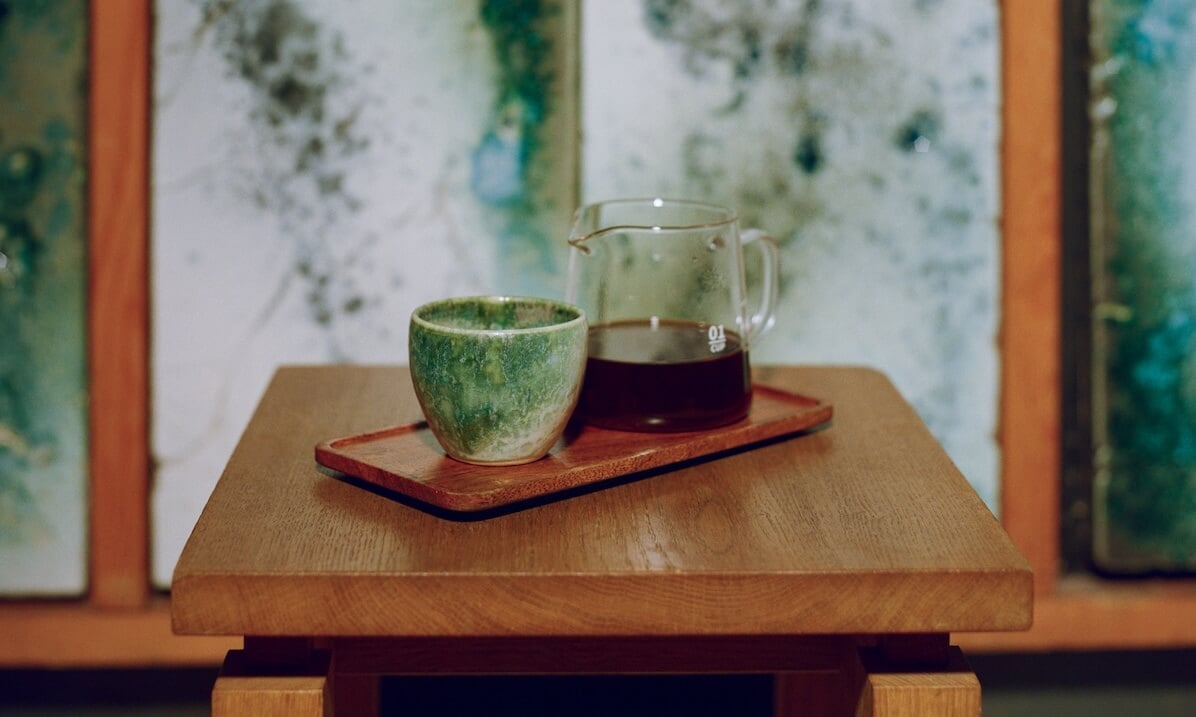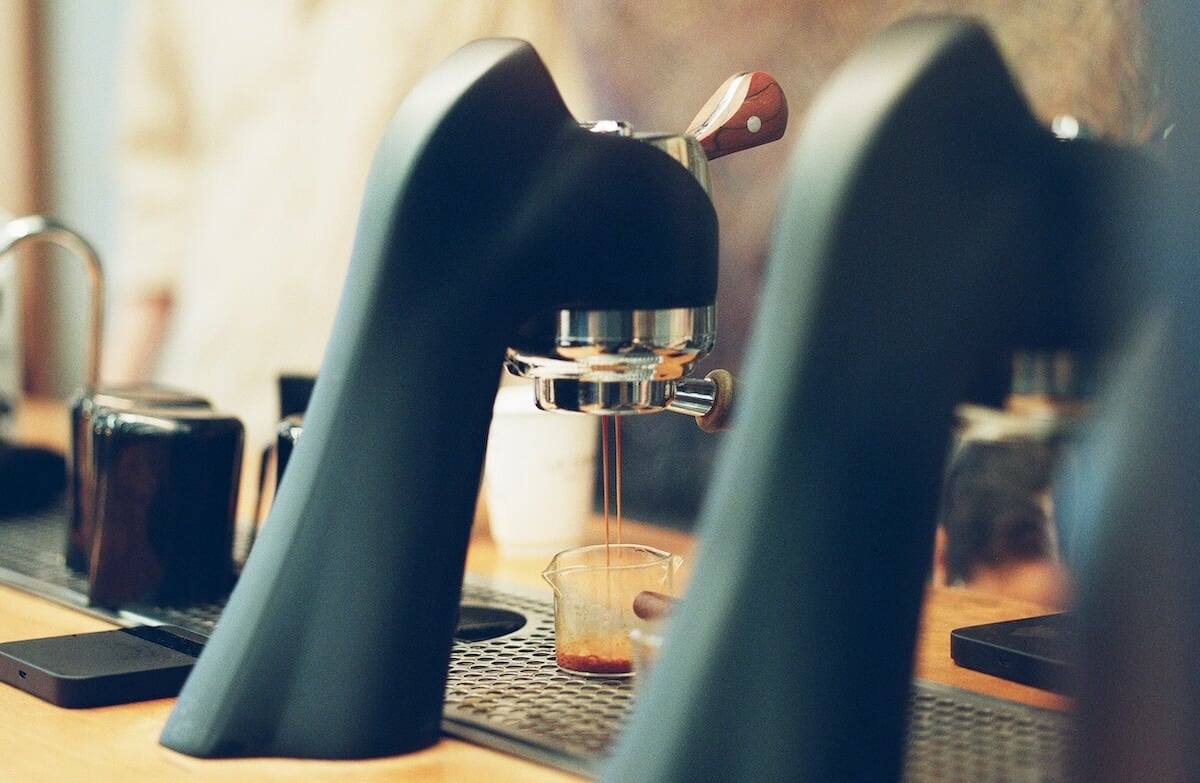
Pour-Over Profiles
Below are some examples of V60 recipes for fresh, rested, and very rested coffees. For all of these recipes, we recommend the CAFEC filter papers, that you can find here.
Please be aware that the recipes below are a guideline only, and the final result will depend on many variables, including for example the chemical make up of your brewing water, or the type and freshness of your grinder burrs. The effect of resting also depends on many factors, most notably the density of the coffee being used. For example, a dense high-grown washed Kenyan coffee will likely take longer to degas than a lower grown naturally processed Brazil.

Less than 2 weeks
For fresher coffees, less than 2 weeks from roast, we recommend using a recipe with 15 grams of coffee, ground rather finer than a typical V60 brew, to 250 grams of water with a TDS of 40ppm at 90°C.
at 0:00 pour to 50g
at 0:45 pour to 250g

Between 2 and 6 weeks
On our brew bars, we use coffees between 2 and 6 weeks from roast, so here we recommend our typical V60 recipe. We use 15 grams of coffee ground slightly finer than for a typical filter brew, to 250 grams of water with a TDS of 40ppm at 98°C.
at 0:00 pour to 50g
at 0:45 pour to 155g
at 1:30 pour to 250g

More than 6 weeks
For very rested coffees, more than 6 weeks from roast, we can push the extraction further without losing balance, due to the almost complete absence of harsh flavours left behind from the roasting process. Here we suggest 15 grams of coffee, ground slightly coarser than a typical V60 brew, to 250 grams of water with a TDS of 40ppm at 94°C.
at 0:00 pour to 50g
at 0:45 pour to 125g
at 1:30 pour to 175g
at 2:15 pour to 250g
Pouring Technique
When brewing these recipes we like to lower manual agitation as much as possible, so we don't stir or swirl during the recipes. We find the coffees to express less clear acidity and aromas when agitated too much. Further more we like to use the Fellow Stagg EKG kettle due to its slow flow spout, not agitating the coffee too much.

Espresso Profiles
We have two standard recipes that can highlight different attributes of our coffees on espresso, whilst still being transparent in flavour profile.

Bright and Soft
When brewing a coffee with a brighter character, often with high density, we aim for a brighter expression in the cup and more separation between flavours, while sacrificing intensity and body. We do this by using a longer ratio and higher brew temperature, but a faster brew time.
Ratio (ground coffee weight:final espresso weight out): 1:3
Brew time: 19-21 seconds
Brew temperature: 96°C
Water: 50ppm
Pressure: 6 Bar

Rich and Sweet
When brewing coffees with a richer and sweeter profile, we aim to highlight this in the cup, with greater intensity of texture and flavour. This recipe is especially effective when combined with milk, where we often prefer naturally processed coffees such as our range from Brazil.
Ratio (ground coffee weight:final espresso weight out): 1:2.5
Brew time: 29-32 seconds
Brew temperature: 92-94°C
Water: 50ppm
Pressure: 6 Bar

Combining with milk
In order to create a balanced milk beverage, you can vary the size of your espresso while maintaining the same ratio. For an example, for our standard cup sizes, we would suggest the following coffee doses and final espresso weights, if using the ‘rich and sweet’ recipe.
120ml: 13g Dose
180ml: 15g Dose
220ml: 18g Dose
Being sure about your recipe
We taste our coffees a lot, mainly through a brew method called cupping which is used specifically for sourcing coffees at origin. It is a full immersion brew method, similar to a french press, where coffee and water is poured into a cup and stirred after 4 minutes. Then tasted with a spoon to asses for various off-flavours in the coffee before buying. But we also like to use it as a guideline for brewing the coffee, tasting and assessing the balance between acidity and aromas in the coffee so we know where to aim with our grindsize when brewing.
The recipe for a cupping is as follows:
14g Coffee
210g Water 50ppm 96C
Pour all water, steep and stir after 4 minutes
Skim the top with two spoons and wait til the coffee cools this is usually after 10 minutes total.
From here wetter you are doing espresso or filter, you get a clear idea of the coffees innate balance.

Troubleshooting
If you are having problems with the dial in try to follow these steps:
1. Try to cup it
Try and see if the coffee has the same off flavours as when you brew it on espresso or filter. If it has the off flavours in the cupping bowl, try to rest it for one more week and see if the flavours have receded through de-gassing.
2. Checking your water TDS and temperature
You should brew at around 92-96 celsius. If the coffee is very fermented in its process, a lower temperature is usually best, avoiding the extraction of too many fermented flavors and giving the cup more fruit character. The water TDS should be between 30-60 TDS, for more info read the water for coffee section. If the coffee has a salty taste or smells fishy you should change your water filters.
3. Read the information about the coffee
The process can have a big impact on what you should do with the coffee, if the coffee is less dense, due to quality or being a natural process you should grind finer when brewing or lower the ratio when making espresso. Furthermore a coffee might just not fit your palate, so reading the information about the coffee before brewing can help you narrow down what you might not like and by other coffee origins or varietals in the future.

